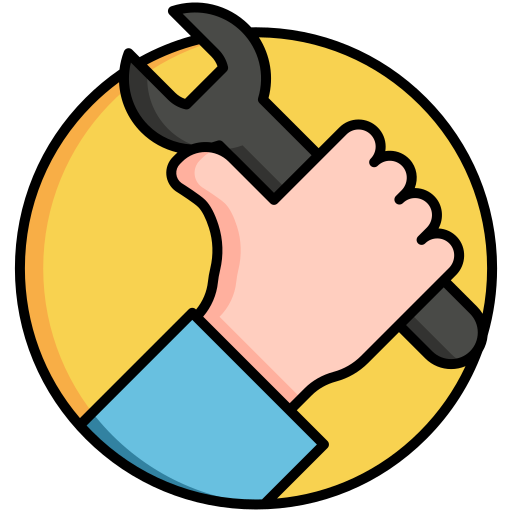In the course of this article, we will look at how to mend a zipper that has slipped off one of its tracks. This common clothing problem can be very annoying.
To fix a zipper that came off one side, you need to get the teeth on the loose side back into the zipper pull, also called the slider. First, check if there is a metal stop at the bottom of the zipper. If so, you may need to gently remove it with pliers. Then, carefully guide the loose zipper tape into the slider. Make sure the tape goes in straight and is level with the other side. Once it is in, hold both sides of the zipper tape firmly below the slider. Then, carefully pull the slider up. If it moves smoothly and joins the teeth, you can then use pliers to add a new bottom stop or pinch the old one back if you removed it. This should fix your zipper. There is more to learn about fixing zippers, so keep reading for a full guide.
Gathering Necessary Tools
Fixing a zipper often needs a few simple tools. You might already have these at home.
- Pliers: Needle-nose pliers are very good for this. They help grip small parts. They can remove old zipper stops. They can also put on new ones. You can use them to gently adjust the slider.
- Small Flathead Screwdriver or Butter Knife: This can help gently pry open the slider if needed. Be very careful if you do this.
- Zipper Stops (if needed): If the bottom stop is lost or broken, you will need a new one. You can find these in sewing kits or online. They are small metal pieces.
- Scissors: Useful for trimming any frayed fabric near the zipper.
- Magnifying Glass (optional): If you have trouble seeing small zipper parts, this can help.
- Seam Ripper (optional): If you need to remove stitches to get to the zipper base.
Having these tools ready will make the repair process much smoother. Always work in a well-lit area so you can see what you are doing clearly.
Step-by-Step: Reattaching a Zipper Slider to One Side
When a zipper slider comes off one side, it seems tricky. But you can often fix it. Follow these steps carefully.
-
Examine the Slider and Zipper Ends: Look at the slider. Is it cracked or badly bent? If so, it might need replacement. Check the very bottom of the zipper tapes where the teeth begin. Make sure the fabric is not too frayed. If there was a metal stop at the bottom, see if it’s still there or if it’s broken. For jackets, sometimes the slider comes off the top if the top stops are missing or if the retainer box and insertion pin at the bottom are involved. We are focused on when it slips off one track, usually from the bottom.
-
Prepare the Zipper Tape: If the end of the zipper tape (the fabric part with the teeth) is frayed, trim it a little. This makes it easier to feed into the slider. You want a clean, straight edge.
-
Remove the Bottom Zipper Stop (If Present and Necessary): Most non-separating zippers (like on pants or bags) have a small metal crimp at the bottom. This is the bottom stop. It prevents the slider from coming off. If your slider has come off one side, this stop might be damaged or you might need to remove it to get the slider back on from the bottom. Use your needle-nose pliers. Carefully grip the bottom stop. Gently wiggle and pull it off the zipper teeth. Try not to damage the fabric tape. If it’s a plastic zipper, the stop might be a thicker part of the plastic teeth. In that case, you might not be able to remove it easily. You might try to feed the tape from the top of the slider channel that is empty.
-
Guide the Loose Zipper Tape into the Slider: This is the key step. Hold the slider firmly. Look at the side of the slider where the tape came out. You will see two openings on that side. You need to feed the loose zipper tape into the larger, more flared opening of that side of the slider. Angle the tape and push it in. It should go in smoothly. Make sure it goes all the way in until the teeth on the loose tape are near where the teeth from the other, still-attached side are. It can help to use a small flathead screwdriver or the tip of a butter knife to gently push the tape into the channel. Ensure the teeth are aligned correctly with the slider mechanism.
-
Align Both Zipper Tapes: Once the loose tape is threaded into its side of the slider, pull the tape down slightly. Make sure both zipper tapes (the one that stayed in and the one you just inserted) are even at the bottom. The slider should now be sitting at the very bottom of both sets of teeth, right above where the bottom stop was. Both sides of the zipper tape should be parallel.
-
Test the Zipper: Hold both zipper tapes firmly below the slider with one hand. With your other hand, carefully and slowly pull the slider upwards. Watch to see if it is engaging both sets of teeth and joining them correctly. If it jams, don’t force it. Slide it back down. Check if the tape is fully inserted and if the teeth are aligned. Then try again.
-
Adjust the Slider (If Necessary): Sometimes, the slider might be a bit too loose. This can happen if it was spread open to get the tape in. Or it might just be loose from use. If the zipper closes but then separates easily, the slider might need tightening. Use your pliers. Gently squeeze the sides of the slider. Squeeze the part that goes over the teeth. Do this a little at a time. Test the zipper after each small squeeze. You don’t want to make it too tight, or it won’t move. Squeeze both the top and bottom parts of the slider evenly.
-
Install a New Bottom Stop: If you removed the old bottom stop, or if it was missing, you need to add one. Without it, the slider can easily come off again. Take a new metal bottom stop. Place it over the first few teeth at the bottom of the zipper, where you want the zipper to end. Make sure it covers the teeth on both sides of the tape. Use your pliers to firmly crimp the stop onto the teeth and fabric. Make sure it’s secure and won’t budge. If you don’t have a new metal stop, you can make one. Use a needle and heavy thread. Sew several stitches back and forth over the teeth at the bottom. Make a thick, firm barrier. This will act as a stop.
If your zipper has plastic teeth, the process is similar. However, be extra gentle. Plastic teeth and sliders can break more easily than metal ones.
Addressing Common Zipper Issues
Sometimes, after reattaching the slider, other problems can appear. Or maybe your initial issue was slightly different.
-
Zipper Teeth Don’t Stay Closed: This is a common problem. You pull the slider up, but the teeth open up behind it. This often means the slider is worn out or spread too wide. As mentioned before, try gently squeezing the slider with pliers. Focus on the gaps at the back of the slider. Squeeze the top and bottom plates of the slider closer together. Do this a tiny bit at a time and test. If this doesn’t work, the slider might be too damaged. You may need a new slider.
-
Missing Teeth: If your zipper is missing one or more teeth, it’s hard to fix reliably. If teeth are missing near the bottom, the slider might get stuck or come off there. If they are missing in the middle, the zipper will always have a gap there. For a few missing teeth at the very top, it might not affect function much. But if they are in a key area, you usually need to replace the entire zipper. A temporary fix for a missing tooth is to sew a stop just before the gap. This shortens the zipper but can make it usable.
-
Slider is Stuck: A stuck slider can be due to fabric caught in it. Or dirt and grime can build up. First, check carefully for any threads or bits of fabric caught in the slider. Use tweezers to pull them out. If there’s no obvious blockage, try a lubricant. A graphite pencil is great. Rub the pencil lead on the zipper teeth around the slider. Silicone spray or even a bar of soap can also work. Apply a small amount. Then, gently try to move the slider back and forth.
-
Broken Slider Pull Tab: If the little tab you pull on breaks off, the slider is still there. But it’s hard to use the zipper. This is an easy fix. You can attach a paperclip through the hole where the tab was. A small keychain ring also works. Or, you can buy replacement zipper pull tabs. These often just clip on.
Tips for Zipper Maintenance
Taking good care of your zippers can prevent many problems. This saves you from future repairs.
- Keep Zippers Clean: Dirt and dust can clog the teeth and slider. Occasionally clean zippers with a damp cloth. For stubborn grime, use an old toothbrush and a little mild soap. Rinse and dry well.
- Lubricate Zippers: Keep zippers running smoothly with a lubricant. As said, a graphite pencil is excellent for both metal and plastic zippers. Rub it on the teeth. Beeswax or a zipper-specific lubricant also works well. Do this every few months, or if a zipper feels stiff.
- Close Zippers Before Washing: When washing clothes with zippers, always close the zippers fully. This stops them from snagging on other clothes. It also reduces stress on the zipper teeth and slider during the wash.
- Don’t Force a Stuck Zipper: If a zipper gets stuck, don’t yank it hard. This can break teeth or damage the slider. Find out why it’s stuck. Gently work it free.
- Check Zipper Stops: Look at the top and bottom stops now and then. Make sure they are secure. If they look loose, use pliers to tighten them gently.
- Store Items Properly: When not using bags or clothes, don’t put too much stress on zippers. Don’t overstuff bags. Hang or fold clothes neatly.
These simple tips will help your zippers last longer. They will also work more reliably.
When to Seek Professional Help
Sometimes, a zipper problem is too big for a home fix. Or you might not feel sure doing it yourself. That’s perfectly fine. Knowing when to go to a professional can save you time and more trouble.
- Multiple Missing Teeth: If many teeth are broken or missing, especially in the middle of the zipper, it usually needs a full replacement. This is a job for a tailor or a shoe repair shop (for boots or heavy bags).
- Torn Zipper Tape: If the fabric tape of the zipper is badly torn or has come away from the garment, it’s often best to have the whole zipper replaced. Sewing a new zipper requires skill and the right equipment.
- Damaged Slider Beyond Repair: If the slider is cracked, severely bent, or a part of it has broken off, simply tightening it won’t work. While you can buy replacement sliders, getting the exact right type and size can be tricky. A professional can match it correctly.
- Delicate or Expensive Items: If the item is valuable, made of delicate fabric (like silk or leather), or has sentimental value, you might not want to risk damaging it. A professional has the experience to handle such items with care.
- Specialty Zippers: Some items have waterproof zippers, invisible zippers, or very heavy-duty zippers. These can be harder to fix or replace than standard ones. A professional will have access to the right parts and know-how.
If you have tried to fix it and it’s not working, don’t get frustrated. A tailor can often replace a zipper for a reasonable cost. This can make your garment or bag perfectly usable again.
Frequently Asked Questions (FAQ)
Q1: Why did my zipper come off one side? A: This often happens if the bottom stop of the zipper is missing or damaged. It can also occur if the slider is too loose or spread open, allowing one side of the zipper tape to slip out. Sometimes, yanking a stuck zipper can also cause this.
Q2: Can I use any pliers to fix a zipper? A: Needle-nose pliers are best because they allow for more precise work on small zipper parts. However, regular pliers can work if you are very careful not to apply too much force, which could break the slider or zipper teeth.
Q3: What if the zipper teeth are plastic, not metal? A: You can use the same general steps for plastic zippers. However, be extra gentle. Plastic sliders and teeth can crack or break more easily than metal ones when using tools like pliers. Avoid prying the slider open too much.
Q4: My zipper slider came off the top of a jacket zipper. How do I fix that? A: For a separating jacket zipper, if the slider came off the top, check the top stops. These are small crimps at the top of each side of the zipper that prevent the slider from going too far. If one is missing, the slider can come off. You’ll need to re-feed the zipper tape into the slider (similar to the method above but from the top) and then crimp on a new top stop or reinforce the existing one. Ensure the insertion pin and retainer box at the bottom are intact and aligned.
Q5: The zipper closes, but then it opens up by itself. What’s wrong? A: This usually means the slider is worn or spread apart. It’s not pressing the zipper teeth together tightly enough. Try the method described earlier for gently squeezing the slider with pliers. If that doesn’t work, you may need to replace the slider itself.
Q6: Is it expensive to get a zipper replaced by a tailor? A: The cost can vary. It depends on the type of zipper, the item (e.g., pants vs. a winter coat), and the tailor’s rates. Generally, replacing a zipper on simple items like pants or a skirt is quite affordable. Complex jobs or specialty zippers will cost more. It’s best to get a quote first.
Q7: Can I fix a zipper if some teeth are bent? A: If a metal tooth is just slightly bent, you might be able to gently straighten it with needle-nose pliers. Be very careful not to break it off. If it’s badly bent or if it’s a plastic tooth, it’s much harder to fix reliably. A straightened tooth may still cause issues later.
Conclusion
A zipper that has come off one side can stop you from using a favorite piece of clothing or a useful bag. However, in many cases, this is a problem you can fix yourself with a little patience and a few common tools. By understanding how your zipper works and following the steps carefully, you can guide that slider back onto its track. Remember to work gently, especially with delicate zippers or plastic parts.





